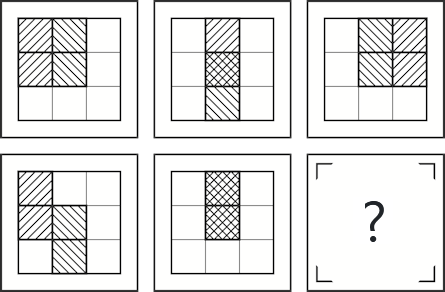Even with all the talk about the SAT over the years, don’t be surprised to find out that there are so many people who do not fully understand the history of this standardized test or what it is really about.
And although the SAT is about the commonest of all standardized tests, a lot of people will still wander into test centres without a full understanding of the SAT and how it works.
Today, we want to remedy that by giving you a complete guide to understanding this all-important test. You can call it your SAT for dummies.
Starting from the history of this test, we will give you a rundown of everything you need to know about the SAT.

IQ test: what is your IQ score?
How smart are you? →After this article, you will be a connoisseur of knowledge on all things SAT. You’d like that, won’t you? We thought so too.
Improve your SAT score: SAT PREP CENTRE
A Bit of an Overview
The SAT was first of all known as the Scholastic Aptitude Test. But afterward, there were a few changes made to the acronym. It went from Scholastic Aptitude Test to Scholastic Assessment Test, to SAT I: Reasoning Test. Right now, it’s simply known as the SAT, and there’s no longer an official acronym attached to it anymore.
Although the College Board owns, manages, and publishes the SAT test, they don’t administer the test. Instead, Educational Testing Service (owners of the GMAT) does that on their behalf.
Looking at the situation of things now, you might think that the SAT has always been popular. Especially with nearly 7 million people taking SAT- and PSAT-related tests all over the world this, however, isn’t very correct. Over the past century, the SAT has had to grow from a position of obscurity to a place of wide acceptance. It has also developed and adapted itself to the dynamic nuances of the American educational system. It’s constantly evolving to meet the current educational and student learning goals of the American academic society.
Even though a lot transpired over the years, the current SAT varies very widely from the very first one administered about 90 years back. The aim of this exam has still not changed. The roots of the SAT begin at a farther date than 90 years back when it was first administered though. If you want to in finding out about the controversial history surrounding the SAT down to what it is right now, then don’t stop reading.
READ: The SAT Curve and How It Works
History of SAT
So how did the SAT begin? First off, the SAT is actually the love child of the marriage between two assessments developed in the early 1900s. One by a committee of a university and one by a university psychology professor.
So here’s what happened. In the year 1900, there were 12 leading universities whose presidents came together to develop a particular idea. The idea was to develop an admissions test that would help them standardize their admissions process. And also help standardize the curriculum of the elite boarding schools from which these top universities would normally get their applicants who would go on to be students. This idea led them to found the College Entrance Examination Board which was to be the parent body that administered the test. This body is what we now call the College Board.
Following this development, the very first test was administered in 1901. These tests were originally administered in essay format and were for specific subject areas.
More History
Now, a short while after this test was developed, a certain psychology professor from Princeton University, Carl Brigham came on board with his own test. And although it bore similarities to the test developed by the College Entrance Examination Board, it was still slightly different. Brigham, at the time, happened to be studying something about the current emergence of IQ tests and therefore decided to develop his own standardized test. But this time it was to be used for army recruits. Known as eugenics, he soon adapted his test to be used as a part of the Princeton University admissions process.
The story doesn’t end there, though. In his day, Carl Brigham was quite infamous for some of his rather offensive ideas about the relationships between race and intelligence. However, much later in his life, when his own theories proved him wrong, Brigham changed his mind. This occurrence caused top universities to include fewer legacy students and, more students who did good on the SAT. And so the SAT became the college admissions standardized test of choice.
Schools that Used SAT First
Princeton University was the very first to try the SAT and that was in the year 1926. But although they did use the test, they didn’t set it as a requirement for admissions until much later. Harvard was the very first college to require SAT scores as a requirement for its scholarship applicants. And this was in the year, 1934. By 1938, all schools that comprise the then College Entrance Examination Board were using the SAT test as a uniform mode of assessment for their scholarship applicants.
Evolution of SAT
The SAT is not an IQ test, so they did not create it to test all that you know. The original intent of designing the test was to erase the differences in schooling when gauging intelligence as it relates to college admissions. They did not design this test to operate in isolation from the American education system. So whatever College Board does is always in tandem with what operates in the most current developments in the American educational system.
But aside from assessing your knowledge base and gauging your college readiness, the SAT also measures the ability of the test taker to apply all that he has learned over the years in high school in unique and relatively complex ways. Due to this reason, the test undergoes constant changes and developments to mirror the standards as set by high schools in America.
For instance, in 1994, the board removed the antonym questions and replaced them with longer reading passages. Also, it was in this year that they permitted students to use calculators for the math section. By 2005, they renamed the verbal section to critical reading. They added short reading comprehension passages along with higher-level math concepts. 2005 also saw an increase in the test time to 3 hours 45 minutes and a change in the “perfect score” from 1600 to 2400.
In 2016, the board added the most recent changes to give the SAT as we know it now. They reverted the perfect score to 1600 by making the essay optional and separately scored. They also removed the caveat for calculators, as well as the guessing penalty. Plus, reading passages are now accompanied by tables and graphs and the test is now available on paper and pencil, as well as on the computer.
READ: All You Need to Know About SAT – SAT FAQs
What Format Does the New SAT Take?
The most recent SAT format, as adjusted in 2016, comprises four sections which include the reading, writing, math without a calculator, and math with calculator sections. The essay is now an optional section. A brief rundown on each section comes up shortly:
The SAT Reading Test
This is the first section of the SAT test. It contains 52 multiple-choice questions, and the entire section takes 65 minutes. Here, you’ll read different texts from a wide range of genres, and answer about 10 questions after each text. Some texts will come with figures, graphs, or tables, others will not. If you finish before the time is up, you can use your spare time to review your work. But you can’t proceed to the next section before the time is up.
SAT Writing and Language Test
This section comes immediately after the reading section. It comprises 44 questions which you must complete in 35 minutes. Here, you need to go through several passages and find ways to better rephrase them to improve the expression of the ideas. This section is also multiple-choice. So, you receive a series of options from which you will pick out the most suitable answer as you believe it to be.
The SAT Math Test (No Calculator)
Next to the Writing and Language test is the Math section without a calculator. It comprises 20 questions which you must complete in 25 minutes. The first 15 questions are usually multiple-choice while the others require grid-in answers. You can’t take scrap paper into the test room, or be given any to work with. However, you can do your rough work in your test booklet.
The SAT Math Test (With Calculator)
This is the last of the required sections on the SAT. In this math section, you can work with a calculator. This section comes with 38 questions you must complete in 55 minutes. Similar to the previous section, the first 30 questions will be multiple-choice but the last 8 will require grid-in answers.
The SAT Essay: Technically, this section is optional and you don’t have to do it if you don’t want to. However, there are a few colleges and universities that may require it before they can consider your test score. This section gives you 50 minutes to analyze a source and from it, write an evidence-based essay.
Should You Take SAT?
Yes, if you plan to apply to a college or university in the United States. At least, it’s either the SAT or the ACT, and these are two pretty similar yet dissimilar tests. Most students opt for the SAT because it’s more popular but with the recent changes made to the new SAT, you have to consider the fact that updated commercial study materials might be more difficult to come by.
But anyway, the ACT isn’t, by any means, the easier option. For one, it has a science section. Plus its essay format is different from that of the SAT. And time constraints on the ACT are tighter than what you have on the SAT. In all though, we will advise that you pick the test which you feel is better tailored to your strengths.
Now that you know all about the SAT, from its history to all the evolution trends it has gone through. It’s time to use all this information to your advantage. Have a fabulous time preparing for your test, and may the odds be ever in your favor. Don’t forget to share!

